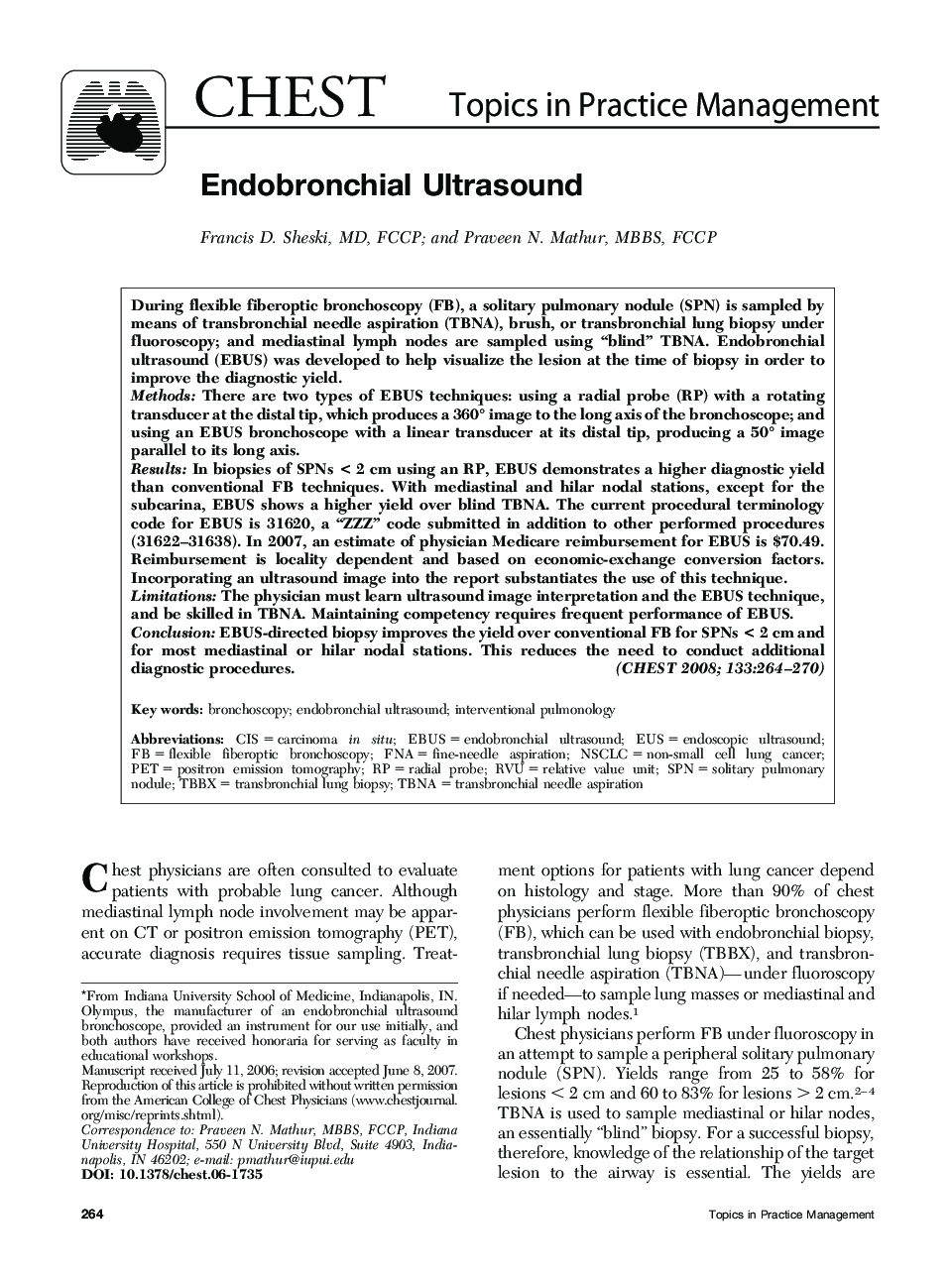| Article ID | Journal | Published Year | Pages | File Type |
|---|---|---|---|---|
| 2904106 | Chest | 2008 | 7 Pages |
During flexible fiberoptic bronchoscopy (FB), a solitary pulmonary nodule (SPN) is sampled by means of transbronchial needle aspiration (TBNA), brush, or transbronchial lung biopsy under fluoroscopy; and mediastinal lymph nodes are sampled using “blind” TBNA. Endobronchial ultrasound (EBUS) was developed to help visualize the lesion at the time of biopsy in order to improve the diagnostic yield.MethodsThere are two types of EBUS techniques: using a radial probe (RP) with a rotating transducer at the distal tip, which produces a 360° image to the long axis of the bronchoscope; and using an EBUS bronchoscope with a linear transducer at its distal tip, producing a 50° image parallel to its long axis.ResultsIn biopsies of SPNs < 2 cm using an RP, EBUS demonstrates a higher diagnostic yield than conventional FB techniques. With mediastinal and hilar nodal stations, except for the subcarina, EBUS shows a higher yield over blind TBNA. The current procedural terminology code for EBUS is 31620, a “ZZZ” code submitted in addition to other performed procedures (31622–31638). In 2007, an estimate of physician Medicare reimbursement for EBUS is $70.49. Reimbursement is locality dependent and based on economic-exchange conversion factors. Incorporating an ultrasound image into the report substantiates the use of this technique.LimitationsThe physician must learn ultrasound image interpretation and the EBUS technique, and be skilled in TBNA. Maintaining competency requires frequent performance of EBUS.ConclusionEBUS-directed biopsy improves the yield over conventional FB for SPNs < 2 cm and for most mediastinal or hilar nodal stations. This reduces the need to conduct additional diagnostic procedures.
